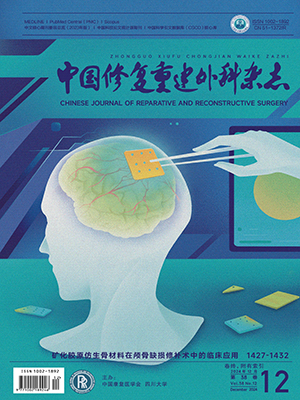Objective To investigate the possibility of ectomesenchymal stem cell of human embryo facial process in differentiating into osteoblasts.Methods Ectomesenchymal stem cells of human embryo facial process were isolated and cultured in mineralized promoting solution containing 10 mmol/L β-glycerophosphate, 100 μg/ml ascorbic acid and 10 nmol/L dexamethasone supplemented with 15% FBS. The morphological change was observed by phase contrast microscopy. The characteristics of cells was identified by immunohistochemistry assay. Alkaline phosphatase activity was tested and the form of mineralized nodules was tested with Von Kossa staining. The expression of osteocalcin was identified by RT-PCR.Results There were significant changes in the shape of the cells after 3 days cultured in mineralized promoting solution. The cells became larger and the shape changed from fibroblast-like to multilateral. The result for anticollogen typeⅠstaining was positive. The alkaline phosphatase activity increased. Mineralized nodules were formed aftercultured 25 days by Von Kossa staining. RT-PCR assay showed induced cells expressed osteocalcin.Conclusion Ectomesenchymal stem cells of humanembryo facial process can be induced to differentiate into osteoblasts by mineralized promoting solution.
Citation: DENG Manjing,JIN Yan,SHI Junnan,et al.. INDUCED DIFFERENTIATION OF ECTOMESENCHYMAL STEM CELLS OF HUMAN EMBRYOFACIAL PROCESS INTO OSTEOBLAST IN VITRO. Chinese Journal of Reparative and Reconstructive Surgery, 2004, 18(4): 314-317. doi: Copy
Copyright © the editorial department of Chinese Journal of Reparative and Reconstructive Surgery of West China Medical Publisher. All rights reserved




